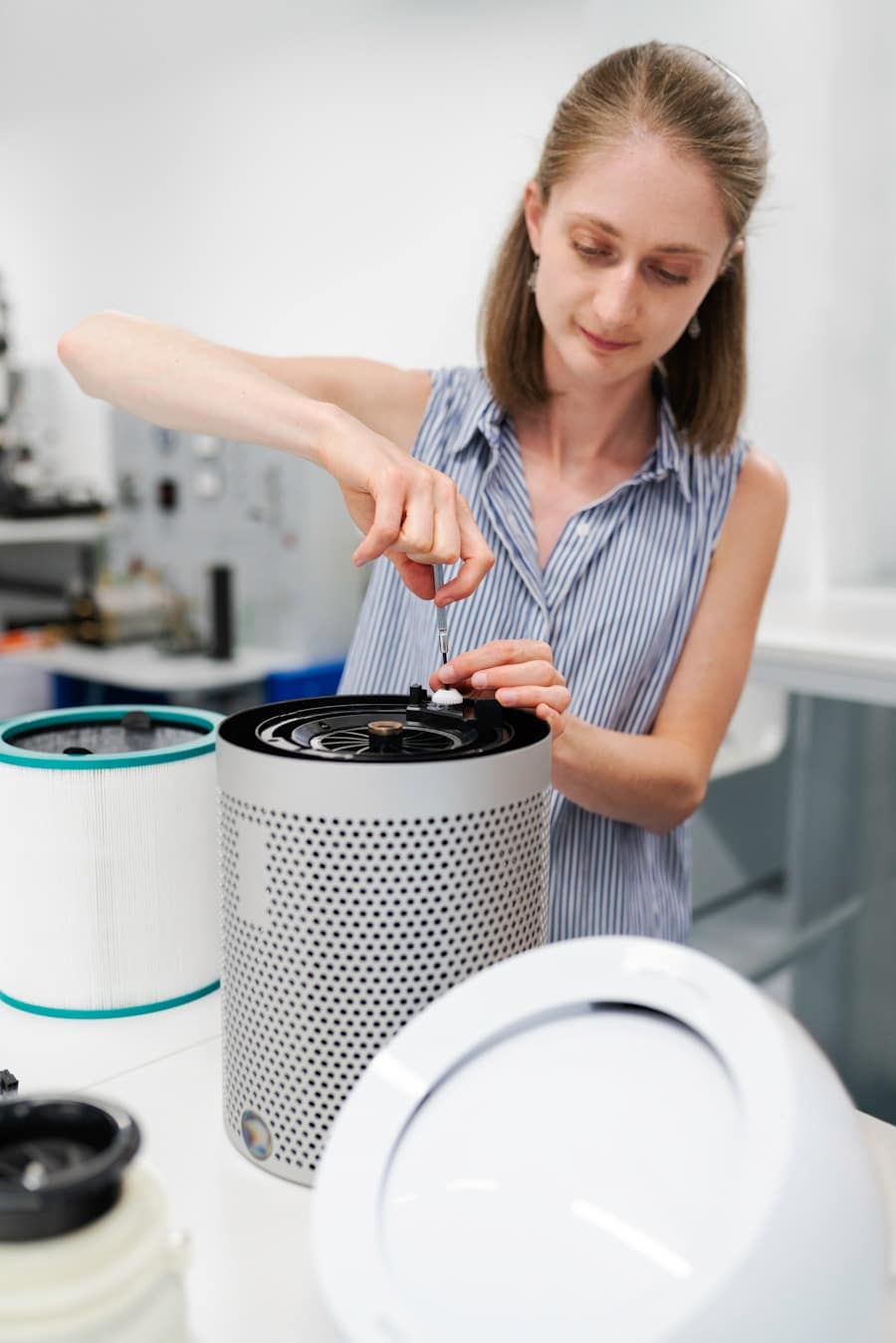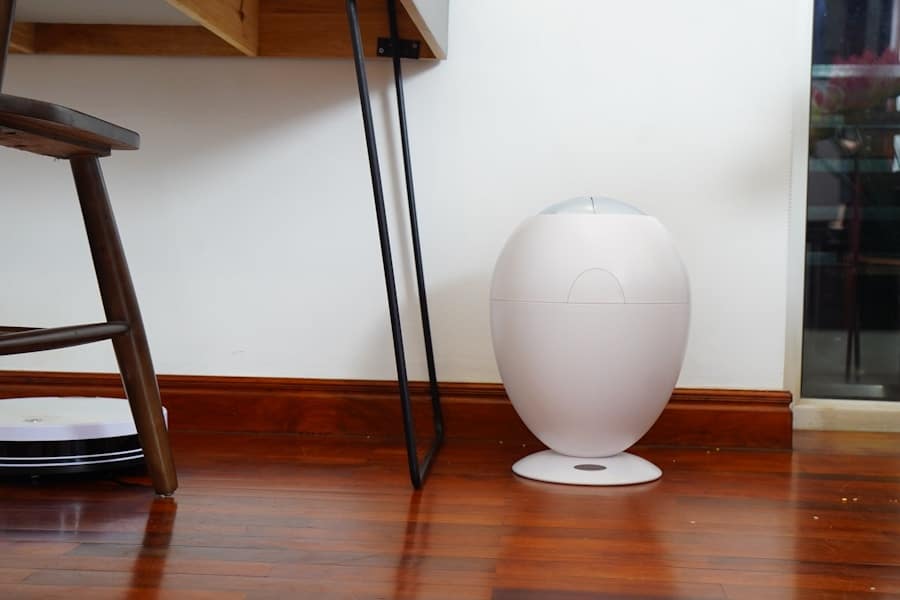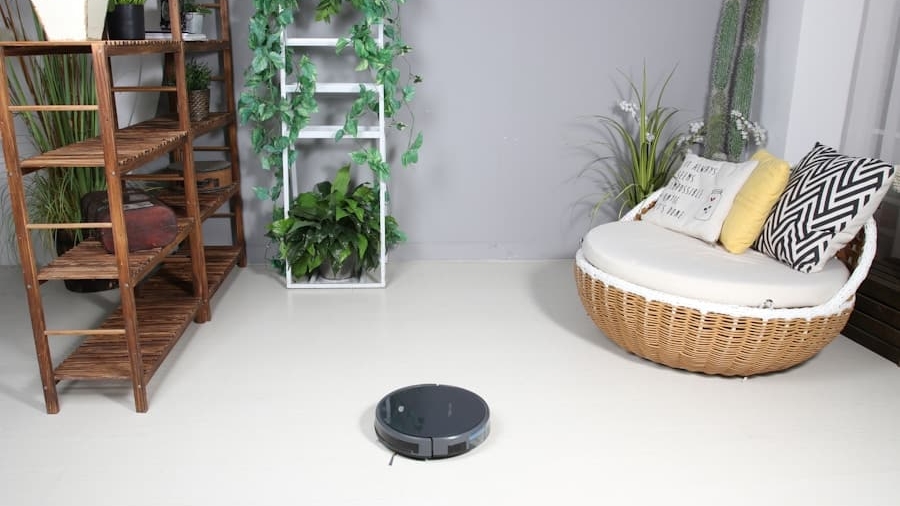The intersection of artificial intelligence (AI) and the Internet of Things (IoT) is revolutionizing the way households approach sustainability. As global concerns about climate change and resource depletion intensify, the integration of these technologies offers innovative solutions that empower individuals to reduce their environmental impact. AI, with its ability to analyze vast amounts of data and learn from patterns, complements IoT devices that collect real-time information from various household systems.
Together, they create a synergistic effect that enhances energy efficiency, optimizes resource usage, and promotes sustainable living practices. In recent years, the proliferation of smart home devices has made it easier for homeowners to monitor and manage their energy consumption, water usage, and waste production. From smart thermostats that adjust heating and cooling based on occupancy patterns to AI-driven appliances that optimize their operation, these technologies are not just conveniences; they are essential tools in the quest for a more sustainable lifestyle.
As households increasingly adopt these innovations, the potential for significant reductions in carbon footprints becomes more tangible, paving the way for a greener future.
Key Takeaways
- AI and IoT technologies are revolutionizing household sustainability by enabling smarter and more efficient use of resources.
- Smart thermostats leverage AI and IoT to optimize energy usage and reduce utility bills, while also providing greater comfort and convenience for homeowners.
- AI-powered appliances, such as smart refrigerators and washing machines, are designed to minimize energy consumption and reduce environmental impact.
- IoT-enabled waste management and recycling systems help households to better manage their waste and contribute to a more sustainable environment.
- Smart irrigation systems utilize AI and IoT to optimize water usage, reduce water waste, and promote water conservation in households.
Smart Thermostats and Energy Efficiency
Optimizing Energy Use
Smart thermostats analyze data on when residents are typically home or away, adjusting the temperature accordingly to minimize energy use during unoccupied periods. This not only leads to lower utility bills but also contributes to a decrease in greenhouse gas emissions associated with energy production.
Real-Time Energy Monitoring
Many smart thermostats come equipped with features that allow users to monitor their energy usage in real-time through mobile applications.
For instance, if a user notices a spike in energy usage during certain hours, they may adjust their habits or settings to mitigate this increase.
Integrating with Renewable Energy Sources
Some smart thermostats can integrate with renewable energy sources, such as solar panels, further enhancing their sustainability credentials by optimizing energy use based on availability. This integration enables homeowners to make the most of their renewable energy sources, reducing their reliance on non-renewable energy and minimizing their carbon footprint.
AI-Powered Appliances for Reduced Energy Consumption

The advent of AI-powered appliances marks a significant leap forward in energy efficiency within the household. These devices utilize machine learning algorithms to analyze usage patterns and optimize their performance accordingly. For example, a smart washing machine can determine the optimal water temperature and cycle duration based on the load size and fabric type, ensuring that it operates at peak efficiency while delivering excellent cleaning results.
This not only conserves water and energy but also extends the lifespan of clothing by reducing wear and tear. Refrigerators equipped with AI capabilities can monitor food inventory and suggest recipes based on available ingredients, minimizing food waste—a critical aspect of sustainability. By alerting users when items are nearing expiration or when they have excess produce, these appliances help households make better purchasing decisions and reduce unnecessary waste.
Furthermore, some AI-powered ovens can adjust cooking times and temperatures based on real-time feedback from sensors, ensuring that meals are prepared efficiently without overcooking or wasting energy.
IoT-Enabled Waste Management and Recycling
IoT technology is transforming waste management practices in households by providing real-time data on waste generation and recycling habits. Smart bins equipped with sensors can monitor fill levels and send alerts when they need to be emptied, optimizing collection schedules for waste management services. This not only reduces operational costs for municipalities but also minimizes the carbon footprint associated with waste collection vehicles making unnecessary trips.
Additionally, IoT-enabled recycling systems can educate users about proper recycling practices by providing feedback on their recycling habits. For instance, some smart bins can identify recyclable materials through image recognition technology and provide users with information on how to sort their waste correctly. This educational aspect is crucial in promoting sustainable behaviors within households, as it empowers individuals to take responsibility for their waste management practices.
By fostering a culture of recycling and responsible waste disposal, IoT technology plays a vital role in reducing landfill contributions and promoting circular economy principles.
Smart Irrigation Systems for Water Conservation
Water conservation is another critical area where AI and IoT technologies are making significant strides. Smart irrigation systems utilize soil moisture sensors and weather data to optimize watering schedules for gardens and lawns. By analyzing real-time conditions, these systems can determine when plants need water and how much is required, preventing overwatering and ensuring that resources are used efficiently.
This not only conserves water but also promotes healthier plant growth by providing optimal hydration levels. For example, a smart irrigation system might adjust its watering schedule based on recent rainfall or changes in temperature, ensuring that gardens receive just the right amount of moisture without wasting water. Homeowners can also control these systems remotely through mobile applications, allowing them to monitor their gardens even when they are away from home.
This level of control not only enhances convenience but also reinforces sustainable practices by encouraging responsible water usage.
AI-Driven Transportation Solutions for Reduced Emissions

Transportation is a significant contributor to household carbon footprints, but AI-driven solutions are emerging to mitigate these emissions effectively. Ride-sharing platforms powered by AI algorithms optimize routes and match passengers with drivers efficiently, reducing the number of vehicles on the road and minimizing fuel consumption. By encouraging carpooling and shared rides, these services help decrease traffic congestion while promoting sustainable transportation options.
Moreover, AI is playing a crucial role in the development of electric vehicles (EVs) and autonomous driving technologies. Smart navigation systems in EVs can analyze traffic patterns and charging station availability in real-time, allowing drivers to plan their routes more efficiently while minimizing energy consumption. Additionally, autonomous vehicles equipped with AI can communicate with each other to optimize traffic flow, reducing stop-and-go driving that contributes to increased emissions.
As these technologies continue to evolve, they hold the potential to transform household transportation into a more sustainable practice.
Monitoring and Managing Household Carbon Footprints with AI and IoT
The ability to monitor and manage household carbon footprints is becoming increasingly accessible through AI and IoT technologies.
By visualizing this data through user-friendly interfaces, homeowners can identify areas where they can make improvements to reduce their environmental impact.
For instance, an integrated smart home system might highlight that a particular appliance is consuming more energy than average or that certain habits lead to higher emissions during specific times of day. Armed with this information, residents can make informed decisions about their energy usage—whether it’s adjusting thermostat settings during peak hours or replacing older appliances with more efficient models. This proactive approach not only fosters greater awareness of individual carbon footprints but also encourages sustainable practices that contribute to broader environmental goals.
Future Implications and Potential of AI and IoT in Household Sustainability
Looking ahead, the potential for AI and IoT technologies to enhance household sustainability is vast. As these technologies continue to advance, we can expect even greater integration across various systems within homes. For instance, future developments may lead to fully automated homes that seamlessly manage energy consumption, water usage, waste disposal, and transportation—all while optimizing for sustainability goals.
Moreover, as public awareness of climate change grows, there will likely be increased demand for smart home solutions that prioritize sustainability. Manufacturers will respond by innovating new products that leverage AI and IoT capabilities to meet these needs effectively. The convergence of these technologies could lead to the emergence of new business models focused on sustainability—such as subscription services for energy-efficient appliances or community-based platforms for sharing resources among neighbors.
In conclusion, the integration of AI and IoT into household sustainability practices represents a transformative shift towards more responsible living. By harnessing the power of these technologies, individuals can take meaningful steps toward reducing their environmental impact while enjoying the benefits of modern conveniences. As we continue to explore the possibilities within this domain, it becomes increasingly clear that the future of sustainable living is not only achievable but also within our grasp through innovation and collaboration.
In a related article on how to choose a PC for students, the focus is on selecting the right technology that can enhance learning and productivity. Just like AI and IoT are revolutionizing household energy consumption, having the right tools and devices can also make a significant impact on students’ academic performance and overall experience. By making informed choices about technology, students can optimize their learning potential while also reducing their carbon footprint through efficient use of resources.
FAQs
What is AI and IoT?
AI, or artificial intelligence, refers to the simulation of human intelligence in machines that are programmed to think and act like humans. IoT, or the Internet of Things, refers to the network of physical devices, vehicles, home appliances, and other items embedded with sensors, software, and connectivity which enables them to connect and exchange data.
How are AI and IoT reducing household carbon footprints?
AI and IoT are reducing household carbon footprints by optimizing energy usage, improving waste management, and enhancing overall efficiency in homes. They achieve this by automating and controlling various systems and devices to minimize energy consumption and waste generation.
What are some examples of AI and IoT applications in reducing household carbon footprints?
Examples of AI and IoT applications in reducing household carbon footprints include smart thermostats that adjust temperature settings based on occupancy and weather conditions, energy management systems that optimize electricity usage, and smart appliances that operate at the most energy-efficient levels.
How do AI and IoT contribute to sustainable living?
AI and IoT contribute to sustainable living by enabling households to monitor and manage their energy consumption, reduce waste, and make more environmentally friendly choices. They also help in creating more sustainable and eco-friendly homes by promoting efficient resource usage.

